The History of Space Exploration: Discoveries from the Ancient World to the Extraterrestrial Future Roger D. Launius Thames & Hudson (2018)
The hurtling pace of scientific development can make it feel as if humans have been exploring space longer than the 61 years since the launch of the first satellite, Sputnik 1. Jam-packed with information, The History of Space Exploration by former NASA historian Roger Launius brings these whirlwind decades to life in a hugely accessible way. That is largely thanks to images that capture the awe-inspiring side of space, as well as the humans behind its exploration. Delightfully nerdy details chronicle everything from the first rocket engines to astronauts’ accessories. The prominence of space in popular culture features heavily.
This rich, compelling book is also an optimistic account. It retraces the incremental steps of space exploration, from ancient attempts to understand the cosmos to dreams of voyaging across the Solar System and setting up home on other planets.
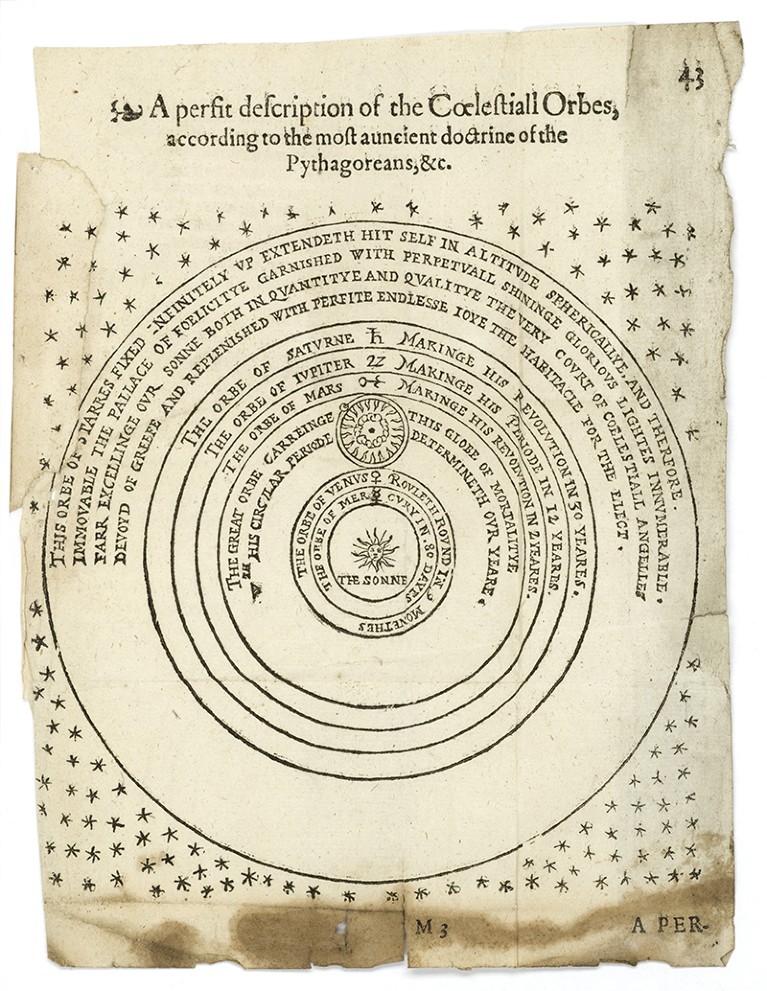
Credit: Wellcome Coll.
A cosmic shift This 1576 diagram by English astronomer Thomas Digges, from his A Perfit Description of the Coelestiall Orbes, describes the planets’ orbits around “The Sonne”. Based on Polish mathematician Nicolaus Copernicus’s model, this heliocentric description challenged the teaching that the Sun revolved around Earth.
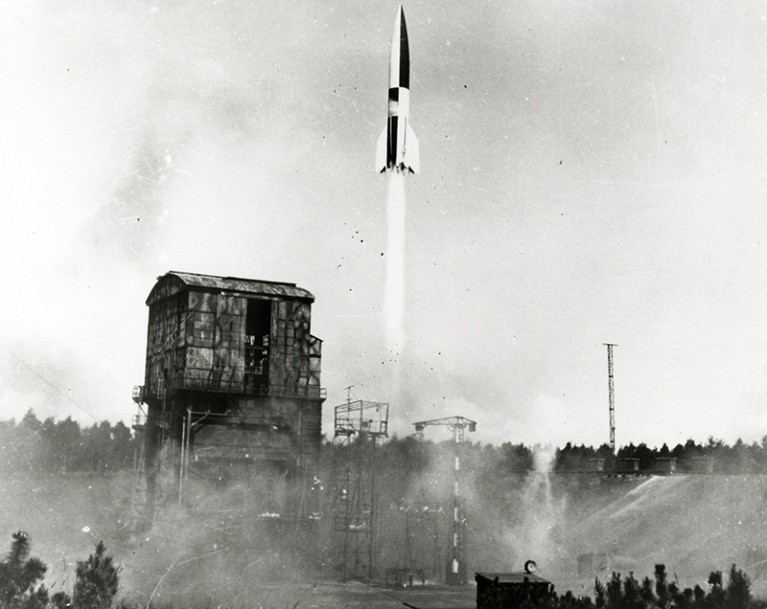
Credit: NASM/Smithsonian Inst.
The first rockets War spawned the ancestor of modern space exploration: one of the most infamous weapons of all time, the Nazi V-2 rocket. Pictured during its first successful launch, at Germany’s Peenemünde research and development facility in 1942, the V-2 was the first ballistic missile, and its design influenced almost every rocket that followed.
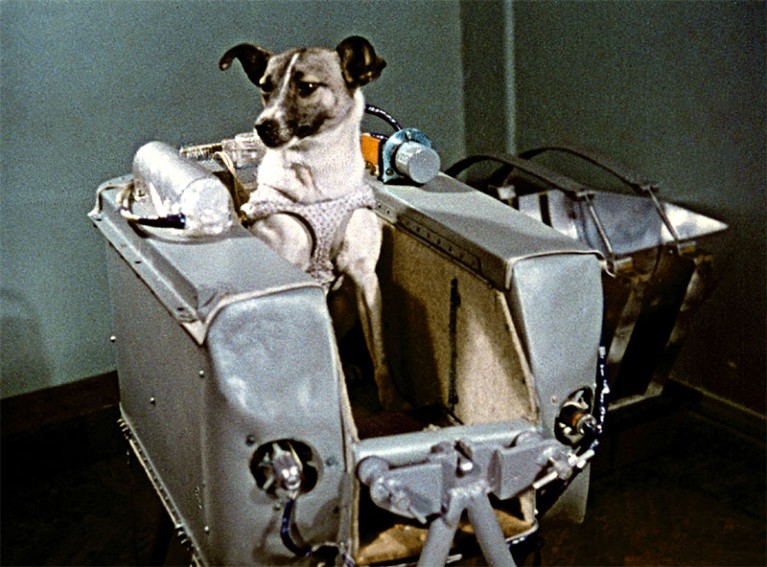
Credit: Sputnik/Alamy
The space age begins The Soviet Union kicked off the space race in 1957, stunning the world by launching Sputnik 1, the first human-made object in orbit. Just one month later, stray dog Laika (‘barker’ in Russian; pictured) became the first animal in space. The audacious mission lasted for almost 200 days and exemplified the Soviet rush for ‘firsts’. Humans were not far behind — cosmonaut Yuri Gagarin became the first person in space in 1961. The pioneering pup, however, is likely to have survived for just hours.
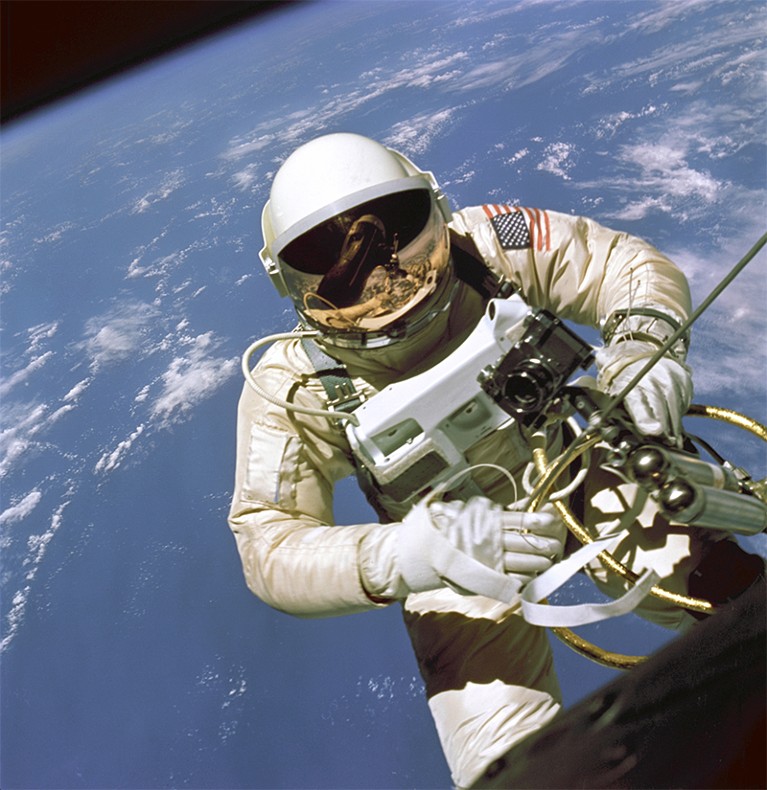
Credit: NASA Commons
Superstar astronauts. Edward White, pictured, was the first US citizen to walk in space — he did so in 1965, three months behind Soviet cosmonaut Alexey Leonov. As the space race heated up, both US and Soviet hopefuls rattled through a series of feats that thrilled the public. The first woman in space, Valentina Tereshkova, flew in 1963, but it was not until the 1980s that women became regular members of astronaut crews.
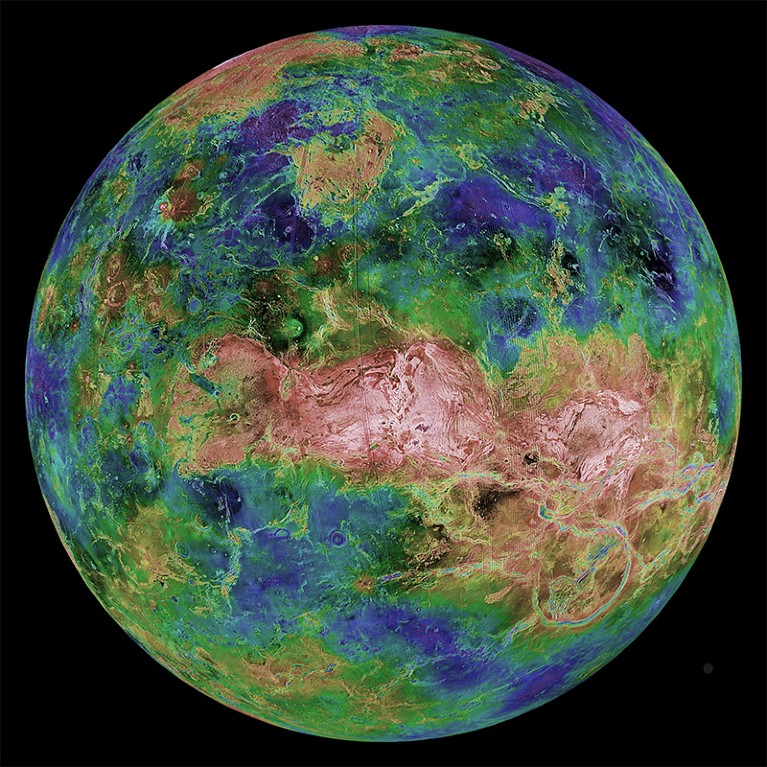
Credit: NASA/JPL/USGS
Expanding horizons Following the first Moon landing, achieved in 1969 by NASA, more nations became spacefarers, and efforts took off to study the Solar System scientifically. Hoping to find signs of life, some of the earliest robotic missions targeted Venus, but bad luck and an inhospitable environment scuppered many. The first high-resolution map (pictured) of the Venusian surface came only in 1989, with NASA’s Magellan probe, which revealed signs that the planet was once geologically active.
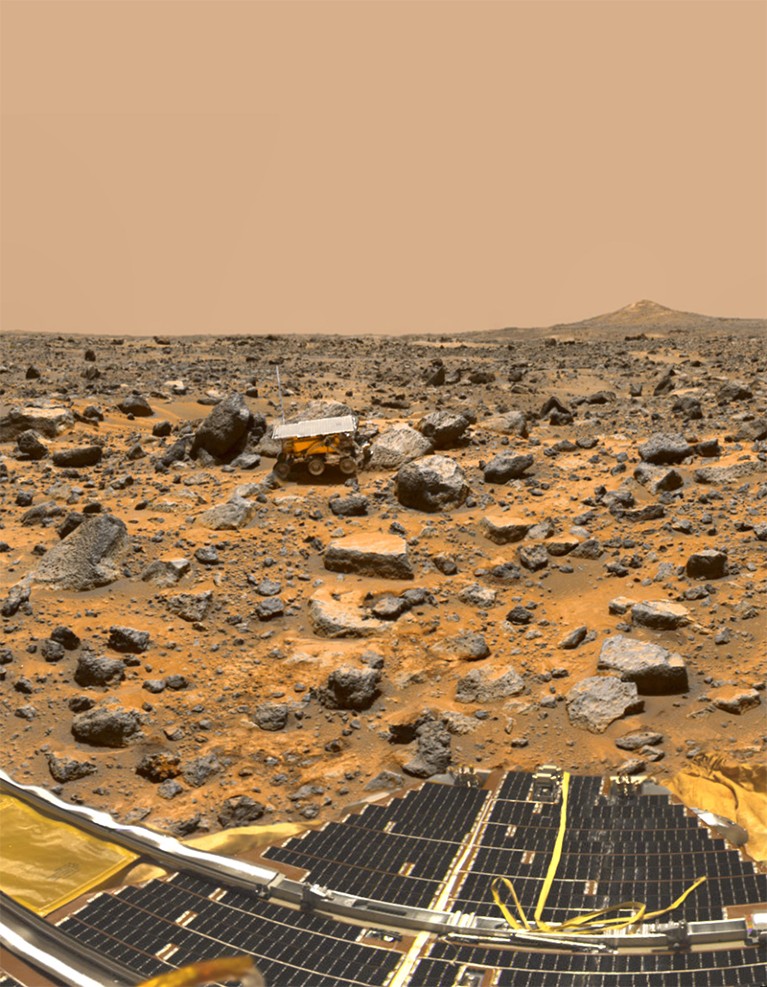
Credit: JPL/NASA
Mars calling The red planet has long generated excitement and expectation as the probable next destination for human exploration beyond the Moon. NASA’s Mars Pathfinder mission sparked huge public interest when it landed on the planet in 1997, returning more than 10,000 pictures of the surface. This view of a floodplain hinted at the planet’s warmer, wetter past. Today, at least one NASA rover is in operation, and nations including China are planning sample-return missions.
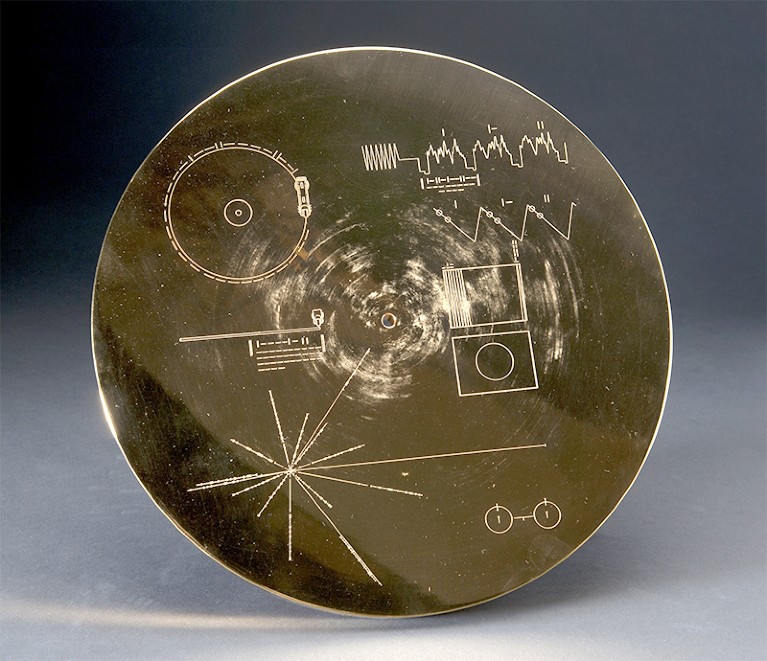
Credit: NASM/Smithsonian Inst.
The furthest reaches Humanity’s most distant explorers are the dual Voyager probes. Launched in 1977, Voyager 1 and Voyager 2 made revolutionary studies of all four gas-giant planets before leaving the Solar System for interstellar space. They are still beaming back data. As our missive to other worlds, each probe carries a golden record (shown here) that includes songs, images and greetings from Earth, alongside a map depicting its origin.
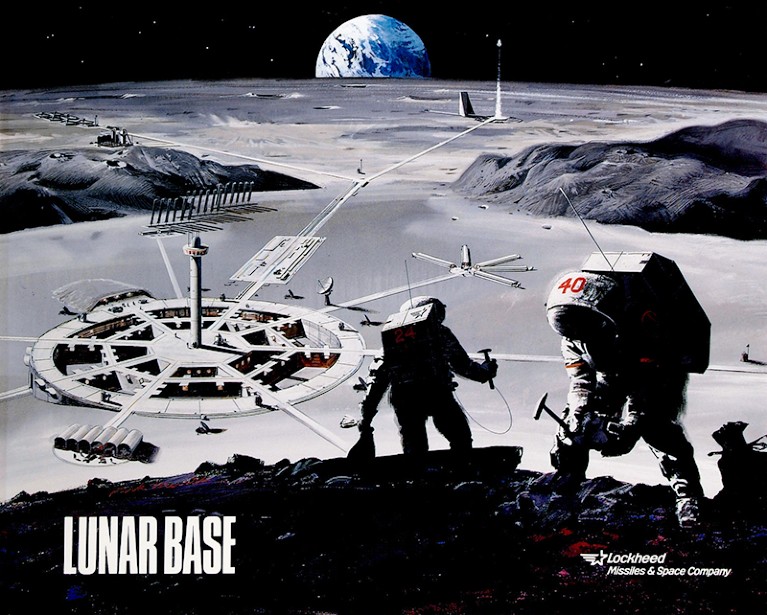
Credit: NASM/Smithsonian Inst.
Imagining the future For centuries, humans have dreamed of setting up camp beyond Earth, and vivid depictions of planetary colonies pepper this book. Reminiscent of such sci-fi visions, this poster from aerospace giant Lockheed Martin is thought to promote a real proposal for a lunar base. Interest in establishing a base on the Moon has grown in recent years, with private companies keen to harness a new generation of cheaper rocket technology to exploit off-world resources.


 Reflections of a Moonwalker
Reflections of a Moonwalker
 Beyond the heliopause
Beyond the heliopause
 When Soviets ruled the great beyond
When Soviets ruled the great beyond








